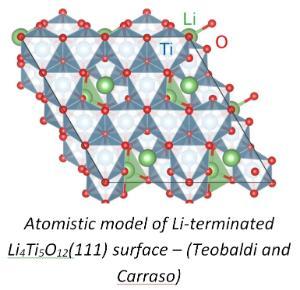Unique Opportunity for Knowledge Exchange

SIRBATT (Stable Interfaces for Rechargeable Batteries) is a European Funded FP7 project based with the Department of Chemistry at the Stephenson Institute for Renewable Energy. It is a collaborative project, which includes six universities, five industry partners and one research institute from across Europe. Collaboration with leading battery research groups at an international level will plays an important part in the project. It is coordinated by Dr Laurence Hardwick who outlined that “the diversity of the organisations in the network provides a wide range of complementary expertise in areas relating to the study of battery electrode interfaces, at both experimental and theoretical levels”.
In recently months SIRBATT has provided it partner institutions with the opportunity to apply for its Internal and International Travel Awards with grants available of up to €500 and €5,000 respectively to enable mobility of PhD students, PDRAs and early-career academics to support the goals of SIRBATT.
The aim of these Awards is to bring together an international community of researchers from industry, academia and national laboratories with a shared interest in battery and electrochemical energy device research. Dr Hardwick states that “through this method of knowledge exchange it is envisaged that lasting collaborations, leading to cutting edge science, will be built whilst standardising new techniques, especially for applications to electrochemical devices and in situ measurements. Ultimately this will lead to the establishment, and dissemination, of best-practice methodologies.”
Dr Gilberto Teobaldi of the Department of Chemistry has already benefited from this funding. He visited SIRBATT industry partners CIC energiGUNE in Spain recently then hosted Dr J Carraso of CIC energiGUNE at the University of Liverpool. Their work has focused on the characterisation of buried interfaces at lithium titanate, Li4Ti5O12, anodes and interfaces. Li4Ti5O12 is touted as a replacement to the standard carbon anode, and offers considerable improvements in battery safety. Understanding the interface can allow us to fully exploit the rapid lithium ion transport within the material in order to provide higher power batteries.

The Award further facilitated the exchange of expertise when Dr Munoz from CIC energiGUNE who visited the University of Camerino as the starting point for the development of in situ X-Ray Absorption (XAS) and photoemission (PES) experiments.
Finally, the maximum award of €5000, was provided to Mr Stephan Koch, a PhD student from the University of Munster, who will spend 12 weeks during the Spring/Summer 2014 working within the Teobaldi Group at the Stephenson Institute for Renewable Energy. This Group is currently working on initial solvent decomposition and solid electrolyte interphase formation at metallic Li-anode surfaces. During his stay, Mr Koch will be trained on, and apply, state of the art first principles modelling techniques.
The SIRBATT Consortium and Project Board met at the University of Liverpool 24th-25th February 2014 when, following the success of this scheme, further consideration was given future awards. Dr Hardwick stressed that “this method of funding researcher exchanges, within projects such as SIRBATT, is an ideal way for colleagues across the University to encourage knowledge exchange and could be included in future funding bids. It has already benefited the SIRBATT Project at this very early stage in its cycle, and is foreseen to become a key instrument within the Consortium”.